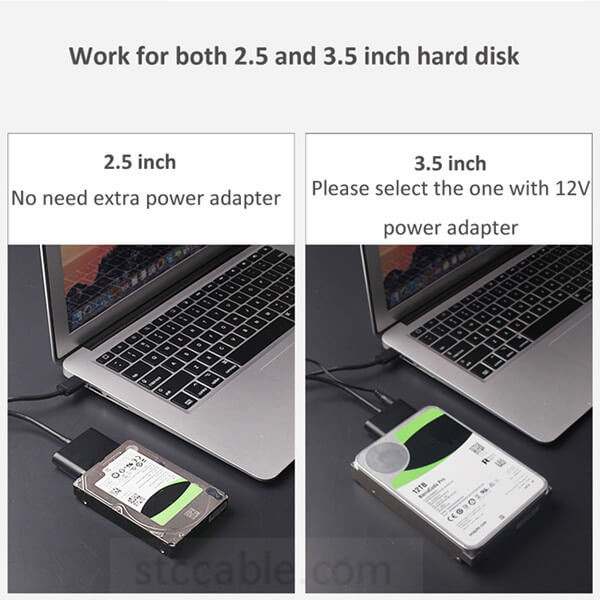How to select a USB to SATA converter?
Selecting a USB to SATA converter requires careful consideration to ensure compatibility and performance. Here are the key factors to consider:
1. Compatibility
SATA Version: Ensure the converter supports the SATA version (SATA I, II, III) of your drive. Most converters are backward compatible, but it's best to verify.
Drive Size: Check if the converter supports both 2.5-inch and 3.5-inch drives if you have different drive sizes. Some converters come with adapters or enclosures to accommodate both sizes.
Operating System: Confirm that the converter is compatible with your operating system (Windows, macOS, Linux).
2. USB Version
USB 2.0: Older standard with slower speeds (up to 480 Mbps). Suitable for basic data transfer needs but not ideal for large files or high-speed operations.
USB 3.0/3.1/3.2: Provides faster transfer rates (up to 5 Gbps for USB 3.0, 10 Gbps for USB 3.1, and up to 20 Gbps for USB 3.2). Preferable for better performance and faster data transfers.
USB-C: Some newer converters use USB-C for even faster speeds and reversible connector convenience. Ensure that your device supports USB-C if choosing this option.
3. Data Transfer Speed
Speed: Check the maximum transfer speed supported by the converter. Match it with the speed of your SATA drive and USB port for optimal performance.
4. Power Supply
Power Requirements: 2.5-inch SATA drives usually get enough power through the USB connection. However, 3.5-inch drives often require an external power source. Ensure the converter includes an appropriate power adapter if needed.
5. Build Quality
Durability: Look for converters with solid construction and good reviews on durability. Well-built converters are less likely to fail or cause connection issues.
6. Additional Features
Data Backup/Cloning Software: Some converters come with bundled software for backup or drive cloning, which can be a useful bonus.
Tool-Free Setup: Many converters offer easy, tool-free installation, which simplifies connecting and disconnecting drives.
7. Brand and Reviews
Reputable Brands: Choose converters from reputable brands known for quality and reliability.
Customer Reviews: Read user reviews to gauge real-world performance and reliability.
8. Price and Warranty
Price: Higher price doesn’t always mean better quality, but extremely cheap converters might be less reliable. Balance cost with the features and brand reputation.
Warranty: Check if the converter comes with a warranty for added peace of mind.
By considering these factors, you can select a USB to SATA converter that suits your needs and ensures reliable performance for your data transfer or external storage requirements.
Send your message to us:
Post time: Sep-04-2024
